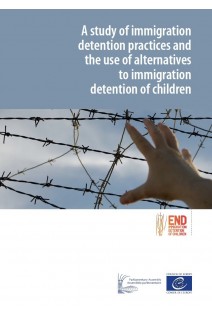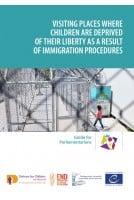



Europe continues to be faced with unprecedented numbers of migrants seeking protection. Migrant children are the most vulnerable group, whether they are arriving with their families or as unaccompanied minors. A worrying number of them end up in administrative detention as a result of existing immigration laws and policies. In detention facilities they are at high risk of abuse and neglect. Moreover, minors that are unaccompanied or separated from their parents or guardians are often unable to advocate for their fundamental human rights.
ABBREVIATIONS
AIMS AND OBJECTIVES OF THIS STUDY
Methodology
INTRODUCTION
General remarks
Reasons for immigration detention
The impact of immigration detention on children
INTERNATIONAL STANDARDS ON DETENTION OF CHILDREN
International principles against detention of children
Overview of case law relating to the immigration detention of children
Council of Europe measures regarding detention of children
NATIONAL IMMIGRATION DETENTION PRACTICES
National provisions on immigration detention
Maximum length of detention and authority responsible for the decision
Statistical data on detention of migrant children
Measures to safeguard family unity
Support systems in place
Non-discriminatory access for migrant children to national services
Screening and assessment procedures in place
Detention conditions
Judicial review
Complaint and monitoring mechanism
SPECIFIC GROUPS OF CHILDREN IN IMMIGRATION DETENTION
Detention of mentally or physically disabled children
Detention of girls
Babies and infants
DETENTION PRACTICES IN THE EU MEMBER STATES
The legal framework in EU member states
Relevant EU texts on irregular migration
ALTERNATIVES TO IMMIGRATION DETENTION
International standards
The use of alternatives in non-EU member states
CONCLUSION
RECOMMENDATIONS
BIBLIOGRAPHY
APPENDIX 1: TABLES
Table 1: National provisions of non-EU member states on immigration detention of children
Table 2: Maximum length of detention and the authority responsible for the detention decision
Table 3: Measures to safeguard family unity
Table 4: Support systems in placea
Table 5: Non-discriminatory access for migrant children to national services
Table 6: Screening and assessment procedures
Table7: Alternatives to immigration detention for children
APPENDIX 2: QUESTIONNAIRE ECPRD NO. 3044 TO COUNCIL OF EUROPE MEMBER STATES
Questionnaire for the Council of Europe Study on Immigration Detention Practices and the Use of Alternatives to Immigration Detention of Children addressed to the member states through the European Centre for Parliamentary Research and Documentation (ECPRD) – Request No. 3044


Europe continues to be faced with unprecedented numbers of migrants seeking protection. Migrant children are the most vulnerable group, whether they are arriving with their families or as unaccompanied minors. A worrying number of them end up in administrative detention as a result of existing immigration laws and policies. In detention facilities they are at high risk of abuse and neglect. Moreover, minors that are unaccompanied or separated from their parents or guardians are often unable to advocate for their fundamental human rights.
